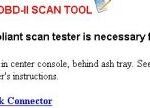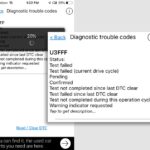On-Board Diagnostics (OBD) is a computerized system in modern vehicles that monitors emissions and diagnostic information. OBD provides benefits for both vehicle owners and technicians by detecting faults early, offering insights into fault causes, and providing real-time sensor readings for data analysis like fuel economy.
OBD2 systems feature a 16-pin diagnostic connector, usually located under the steering wheel. Accessing the OBD2 system requires a scan tool. There are two main types: standalone and PC/Mobile-based. Standalone scan tools are handheld devices with limited functionality, often lacking advanced features and upgradeability, while carrying a high cost.
PC/Mobile-based scan tools, often referred to as a Laptop Obd2 Reader, utilize a laptop, phone, or tablet with OBD software. These connect via USB, Bluetooth, Wi-Fi, or Serial port. Leveraging the power and constant updates of modern devices, laptop OBD2 readers offer flexibility and powerful diagnostic capabilities. They allow for more in-depth analysis and often come with software that can be updated as new vehicle models and diagnostic features are released. This makes them a future-proof investment for those who need comprehensive vehicle diagnostics.
Choosing a laptop OBD2 reader provides a cost-effective and powerful solution for vehicle diagnostics, offering advanced features and future-proof functionality through software updates. This approach empowers users with detailed insights into their vehicle’s performance and potential issues.


